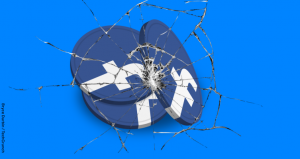It’s soon going to be much easier to get your iPhone fixed. Apple said early Thursday that it was expanding its product repair program. The company plans to give more independently owned repair businesses the same tools and manuals it gives to “Apple Authorized Service Providers.”
It’s a move that advocates of the consumers’ “right to repair”—who often criticize tech giants like Apple and Microsoft for tightly controlling access to the tools and methods needed to fix or upgrade their electronics—are calling a major step forward in the movement.
Apple’s expansion of the program is limited to repair businesses in the US, and it comes with some qualifiers. For example, some type of certification is still required before Apple will provide the required tools, and the company is demanding that any broken parts collected by the indie repair shops are sent back to Apple. Even still, many see this as a win for technology repair businesses, as well as for consumers.
Kyle Wiens, the founder and CEO of iFixit (who also occasionally writes for WIRED’s Opinion section) says that Apple is “finally responding to the reality that their customers have been dealing with for years: Apple does not have the capacity to handle the volume of repairs generated by their market success.”
In a press release, Apple chief operating officer Jeff Williams said that Apple was giving independent repair shops these resources to “better meet customers’ needs.”
“When a repair is needed, a customer should have the confidence the repair is done right. We believe the safest and most reliable repair is handled by a trained technician using genuine parts,” ones that have been tested according to Apple’s standards, Williams said.
Apple said it is officially going to start providing some independent repair shops with the same “parts, tools, training, repair manuals, and diagnostics” that repair technicians get in authorized shops. Those authorized stores include places like Apple’s own retail outlets and, more recently, Best Buy. Now, in theory, any repair shop that goes through the same free, 40-hour online certification program will become authorized to do the same kinds of repairs.
The new repair certification program won’t just provide the hardware parts necessary to fix iPhones, but also software and diagnostics tools. The latter became an issue recently, when repair advocates noticed that swapping out the battery on an iPhone XS, XS Max, or XR—even with another genuine Apple battery—triggered a warning notification in the phone’s settings, something that could not be eliminated unless the person performing the repair would have access to certain parts of the software. Right to repair proponents viewed this as hostile to independent fixers and customers.
Show Me Your Warranty
The new Apple repair program comes with caveats. It only offers “options for the most common out-of-warranty iPhone repairs,” according to Apple. The “out-of-warranty” clause is worth noting because if a person decides to go to one of these independent repair shops—say, if they don’t have an Apple Store or Best Buy nearby—with an in-warranty iPhone that needs fixing, the independent repair shop can determine its own pricing, and it might not align with what Apple normally charges. Certified indie repair businesses also aren’t required to use genuine Apple parts, although Apple will now demand that the certified business discloses to the customer whether it’s an Apple-supplied part or a non-Apple part.
Independent repair shops that become certified must also return broken or unusable parts back to Apple. (The company will cover cost of shipping.) Many shops won’t mind this, says Nathan Proctor, who leads the US PIRG’s Right to Repair campaign, but for other repair shops “refurbished parts are a meaningful business, and help create lower-priced repair options in other parts of the world, especially.”
Also, not everyone who applies for certification will be approved, according to the language on Apple’s new support website. “Meeting program requirements does not guarantee acceptance into the program,” it reads. “Apple reserves the right to reject any application without comment.”
Quick Fix
Wiens from iFixit points out that, while the expanded repair program is a positive step, it still creates a bifurcation between repair businesses who are working with Apple in some way, and customers who just want to fix their products entirely on their own. “It leaves Apple customers who want to perform their own repairs in the cold. If these diagnostics are secure enough to provide to independent technicians, they should be available to consumers as well,” he says.
It’s hard to say whether Apple will ever fully get behind people tinkering with their own iPhones at home, but Thursday’s news is still a “big step forward,” says Larry O’Connor, who runs Woodstock, Illinois-based Other World Computing, a Mac parts and accessories business. He says Apple’s move toward certifying more independent repair shops could come with “huge benefits to users, because it eliminates any excuse for the service provider to just throw in a part that’s not going to be right for the system they’re trying to fix.” He also notes that it’s a wise move for Apple from a public relations position, and that fighting the right to repair movement has not been a good look.
“The ultimate goal should be to extend the life of our electronics,” O’Connor says. This, he believes, is for the benefit of users, the environment—and maybe even the companies themselves. “I truly believe that anything Apple does, anything that any technology company does, to improve repairs, also enhances the resale value of that equipment.”
More Great WIRED Stories
- You are already having sex with robots
- The ethics of hiding your data from the machines
- Smaller cities are trying to plug America’s brain drain
- Why the NFL’s “field goal record is wiating to be smashed
- 👁 Facial recognition is suddenly everywhere. Should you worry? Plus, read the latest news on artificial intelligence
- 📱 Torn between the latest phones? Never fear—check out our iPhone buying guide and favorite Android phones



